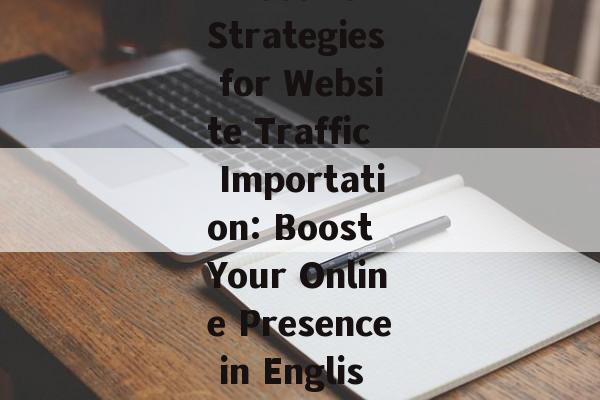Effective Strategies for Website Traffic Importation: Boost Your Online Presence in English
In the digital age, having a website is no longer enough; the real challenge lies in driving traffic to it. Website traffic importation, or the process of attracting visitors to your site, is crucial for any online business or personal brand. Whether you're looking to increase sales, grow your audience, or simply improve your online presence, understanding how to import traffic effectively is key. In this article, we will explore various strategies to help you boost your website's traffic in English.
1. Search Engine Optimization (SEO)
SEO is the cornerstone of website traffic importation. By optimizing your website's content and structure for search engines, you can improve your chances of ranking higher in search results, thereby increasing organic traffic.
Keyword Research: Identify the keywords and phrases that your target audience is searching for. Use tools like Google Keyword Planner, SEMrush, or Ahrefs to find relevant keywords with high search volume and low competition.
On-Page Optimization: Ensure that your website's meta tags, headers, and content are rich in your target keywords. Create high-quality, informative content that provides value to your readers.
Off-Page Optimization: Build backlinks from reputable websites to improve your domain authority. Engage in guest blogging, contribute to industry forums, and use social media to promote your content.
2. Content Marketing
Content is king in the digital realm. By creating valuable and engaging content, you can attract and retain visitors, as well as encourage them to share your content with others.
Blog Posts: Regularly publish blog posts that provide insights, tips, and solutions to your target audience's problems. Focus on long-form content that ranks well in search engines.
Infographics and Visual Content: People love visual content. Create infographics, videos, and other multimedia elements to make your content more engaging and shareable.
E-books and Whitepapers: Offer free resources like e-books or whitepapers in exchange for contact information, which can help you build your email list and nurture relationships with potential customers.
3. Social Media Marketing
Social media platforms are a powerful tool for driving traffic to your website. By leveraging these platforms, you can reach a wider audience and engage with potential customers.
Choose the Right Platforms: Identify which social media platforms are most popular among your target audience and focus your efforts there.
Consistent Posting: Share your content regularly and engage with your audience by responding to comments and messages.
Paid Advertising: Consider using social media advertising to reach a larger audience. Platforms like Facebook, Instagram, and LinkedIn offer sophisticated targeting options to ensure your ads are seen by the right people.
4. Email Marketing
Email marketing is a direct and effective way to drive traffic to your website. By building an email list and sending regular newsletters, you can keep your audience engaged and informed about your latest content and offers.

Lead Magnets: Offer something valuable in exchange for email sign-ups, such as a free e-book, discount code, or exclusive content.
Segmentation: Segment your email list based on interests, demographics, or past interactions to deliver personalized content that resonates with each group.
Automated Emails: Use email automation tools to send targeted messages at the right time, such as welcome emails for new subscribers or follow-up emails for potential customers.
5. Paid Advertising
Paid advertising can be a quick way to drive traffic to your website, although it requires a budget and a strategic approach.
Google Ads: Use Google Ads to appear at the top of search results for your target keywords. Google Ads also allows you to target specific demographics, locations, and devices.
Social Media Ads: Platforms like Facebook, Instagram, and LinkedIn offer robust ad targeting options that can help you reach your ideal audience.
Retargeting: Use retargeting ads to reach visitors who have already visited your website but did not make a purchase. This can help to re-engage potential customers and increase conversions.
6. Partnerships and Collaborations
Collaborating with other businesses or influencers in your industry can help you tap into new audiences and drive traffic to your website.
Guest Blogging: Write articles for other websites in your industry to reach their audience and gain credibility.
Influencer Marketing: Partner with influencers who have a strong following in your niche to promote your content or products.
Cross-Promotion: Engage in reciprocal promotions with other businesses to share each other's audiences and drive traffic.
7. Website Speed and User Experience
A fast-loading website with a great user experience can significantly impact your traffic and conversion rates.
Optimize Images: Compress and optimize images to reduce load times without compromising quality.
Use a Content Delivery Network (CDN): A CDN can help distribute your content across multiple servers, reducing the load time for users in different locations.
Responsive Design: Ensure that your website is mobile-friendly and provides a seamless experience across all devices.
By implementing these strategies, you can effectively import traffic to your website and improve your online presence. Remember that success in website traffic importation is a continuous process that requires ongoing effort and adaptation. Stay informed about the latest trends and best practices in digital marketing, and be willing to experiment with new approaches to find what works best for your business.
相关文章
